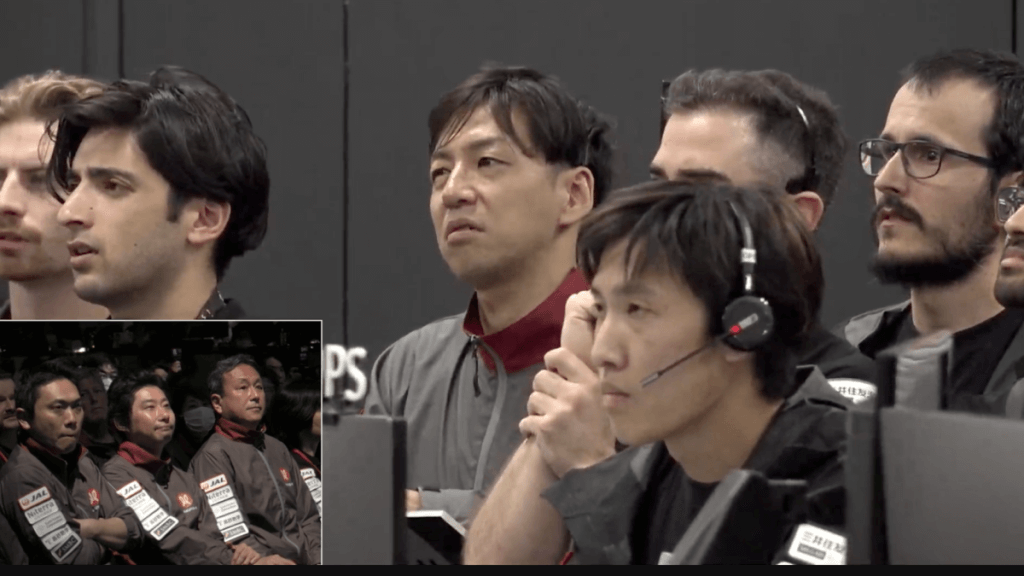A Japanese company likely crashed a spacecraft into the moon as it attempted a soft landing Tuesday, causing an abrupt end to its five-month journey from launch pad to the lunar surface.
The company, ispace, invited the world to watch alongside its Tokyo-based mission control through a livestream of the event on April 25. The nail-biting landing sequence lasted about an hour as the spacecraft performed a braking engine burn and followed automated commands to adjust the Hakuto-R lander’s orientation and speed to touch down.
But after many minutes past the expected landing, mission control could not make contact with the spacecraft. With the team of engineers visibly disappointed, ispace officials said they had to assume the landing was unsuccessful. They’ll continue to investigate the status of the lander, said Takeshi Hakamada, CEO of ispace.
“At this moment, what I can tell is we are very proud of the fact that we have already achieved many things during this Mission 1,” he said. “We acquired actual flight data during the landing phase. That is a great achievement for the future missions.”
Though 60 years have passed since the first uncrewed moon landings, it remains a daunting task, with less than half of missions succeeding. Unlike on Earth, the moon’s atmosphere is very thin, providing virtually no drag to slow a spacecraft down as it approaches the ground. Moreover, there is no GPS system on the moon to help guide a craft to its landing spot. Engineers have to compensate for these shortcomings from 239,000 miles away.

Credit: ispace / YouTube screenshot
Want more science and tech news delivered straight to your inbox? Sign up for Mashable’s Top Stories newsletter today.
This is not the first time the private sector has attempted to get to the moon. For example, in 2019 an Israeli nonprofit and company collaborated on the $100 million Beresheet mission, which crashed on the lunar surface after an orientation component failed. The mishap potentially scattered some intriguing artifacts on the lunar surface in the process.
For one of ispace’s payload customers, the failed landing means the indefinite postponement of another dream: the first Arab moon mission. The ispace lander was supposed to deliver the United Arab Emirates’ Rashid rover(opens in a new tab) to the moon, which would explore the Atlas Crater. Along with the Emirati rover, a Japanese space program robot was on board.
Hakuto-R is the first of many other commercial missions that are expected to attempt this feat soon, many of which are an outgrowth of NASA’s Commercial Lunar Payload Services Program(opens in a new tab). The program was established in 2018 to recruit the private sector to help deliver cargo to the moon. Ispace couldn’t directly participate in the NASA program because it isn’t an American company, but it is collaborating on one of the contracts led by Draper Technologies in Massachusetts, expected to land on the moon in 2025.
Credit: ispace
These upcoming missions will support the U.S. space agency’s lunar ambitions, shipping supplies and experiments to the surface ahead of astronauts’ arrival in 2025 or later, as well as kickstarting a future lunar economy.
Which will be the first to make the journey intact? The commercial race is on, with many more opportunities this year.
“History can be made only by those who (face) challenges, and challenges will not be possible without taking a risk,” said Yuichi Tsuda, a professor of astronautical science at Tokyo University, during the live broadcast. “The risk can be taken only by those who dream. So ispace teams, you are all excellent dreamers.”

